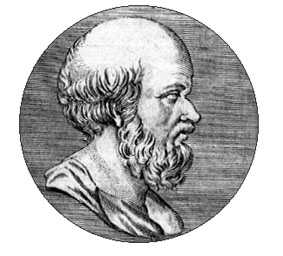Eratosthenes of Cyrene
Eratosthenes of Cyrene (c. 276–c. 194 BC) was a Greek geographer, astronomer and mathematician. Around 240 BC he was appointed librarian at the Great Library at Alexandria. He is sometimes credited with coining the term ‘geography’ to describe the study of the earth. He was somewhat unkindly nicknamed ‘Beta’ as he was considered to be second best in many subjects. Strabo (Bk II Chap 4.4) was quite critical of Eratosthenes. Nevertheless, Eratosthenes is the first person known to have calculated the Earth’s circumference and measured the tilt of the Earth’s axis and his work led to the most accurate maps and globes for a thousand years.
>However, Eratosthenes was not slow to offer criticism himself, being a persistent critic of Homer, whom he considered to be a fantasist. Strabo reported what the geographer had said in the late 3rd century BC: “You will find the scene of Odysseus’ wanderings when you find the cobbler who sewed up the bag of winds.”(b)<
Dhani Irwanto noted that “Eratosthenes was also the first geographer to parallels and meridians within his cartographic depictions, attesting to his understanding of the spherical nature of the earth.”(a)
 Eratosthenes unwittingly entered the Atlantis debate around 250 BC, when he was one of the first to unambiguously place the Pillars of Heracles at the Strait of Gibraltar, while many contend that prior to that the ‘Pillars’ were located at the Strait of Sicily or was, according to Servius, a term applied simultaneously to more than one location, indicating the limit of general maritime knowledge at any given period or as I am inclined to believe, the term had over time become just a metaphor, rather than a reference to a specific location! I consider it highly relevant that no writer prior to Eratosthenes had referred to the Pillars of Heracles being located at Gibraltar.>Given the scarcity of relevant information from Greek sources,<it is not unreasonable to conclude that this silence reflects the lack of knowledge possessed by the ancient Greeks regarding the western Mediterranean, which only improved gradually, as their colonising and trading expanded westward.
Eratosthenes unwittingly entered the Atlantis debate around 250 BC, when he was one of the first to unambiguously place the Pillars of Heracles at the Strait of Gibraltar, while many contend that prior to that the ‘Pillars’ were located at the Strait of Sicily or was, according to Servius, a term applied simultaneously to more than one location, indicating the limit of general maritime knowledge at any given period or as I am inclined to believe, the term had over time become just a metaphor, rather than a reference to a specific location! I consider it highly relevant that no writer prior to Eratosthenes had referred to the Pillars of Heracles being located at Gibraltar.>Given the scarcity of relevant information from Greek sources,<it is not unreasonable to conclude that this silence reflects the lack of knowledge possessed by the ancient Greeks regarding the western Mediterranean, which only improved gradually, as their colonising and trading expanded westward.
The noted English classicist, Robin Lane Fox, wrote in his Travelling Heroes that both Hecateus and Herodotus has located the ‘Pillars’ at Gibraltar[1403.208].
2010 saw the publication of the first English translation of Eratosthenes’ Geographika[761] by Duane W. Roller.
(a) https://atlantisjavasea.com/tag/eratosthenes/
(b) Strabo 1.2.15 *
